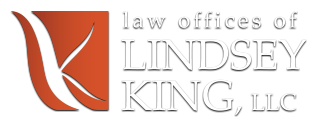Yesterday the Senate passed a revised version of the Families First Coronavirus Response Act (FFCRA). The FFCRA, which President Trump signed into law, provides what Congress is classifying as its second coronavirus aid package to Americans.
Most pertinent to Small Business Owners are 1) Requirements that employers provide paid emergency leave for coronavirus related absences; 2) Expansions to the Family Medical Leave Act (FMLA) to include both unpaid and paid leave taken for coronavirus related absences, and an expansion to include all Small Business Owners with less than 500 employees; 3) Tax relief to employers providing this leave; and 4) Tax Relief for self-employed individuals who must take time off for coronavirus related “absences.” The FFCRA contains other types of relief that will be discussed in the coming days if relevant. The law will go into effect on April 3, 2020.
HIGHLIGHTS OF FFCRA
A. Paid Emergency Sick Leave
All Employers who employ less than 500 employees must provide paid sick leave to employees unable to work due to:
- Government ordered quarantine or isolation for COVID-19;
- Health care provider advised self-quarantine for COVID-19 concerns;
- The Employee experiencing COVID-19 symptoms and seeking diagnosis;
- The Employee caring for an individual under 1 or 2, above;
- The Employee caring for their son or daughter whose school or childcare provider center is closed or unavailable due to COVID-19 precautions.
The amount of paid leave is as follows:
- Full-time employees are entitled to up to 80 hours; and part-time workers are entitled to the number of hours the employee works, on average, over a 2-week period.
- The employer must provide employees with their full normal rate of pay for absences under 1-3, above, up to $511 per day and a maximum of $5,110 in total.
- For absences under 4 or 5 above, the leave is paid at 2/3 of the employee’s regular rate, up to $210 per day and a maximum of $2,100 in total.
Also, the employer may not require the employee to find coverage for missed work while out on this emergency sick leave, nor require the employee first exhaust other sick leave.
B. Emergency Family and Medical Leave Expansion Act
All employers who employ less than 500 employees, even if they ordinarily would not be subject to the FMLA, must provide time off to employees (who have worked for the employer for at least 30 days prior to the leave) to care for their child home due to COVID-19 related school or childcare center closures (similar to 5, above). This leave:
- May be unpaid for the first 10 days of leave taken (but employees may elect to use any other accrued paid leave);
- Must be paid thereafter, up to 12 weeks, at 2/3 of the employee’s regular pay rate, up to $200 per day, and $10,000 in total.
For the small business owners who are ordinarily exempt from the FMLA, there are still some potential exemptions to the expansion, determined on a case-by-case basis:
- Some employers with less than 50 employees may be able to apply for an exemption to this requirement, we will follow up with information on this as it becomes available;
- Employers must still attempt position restoration for employees who take this leave, although there are potential exceptions for those with less than 25 employees.
C. Tax Credits for Employers providing leave benefits
Employers who provide paid leave and/or expanded FMLA leave will be eligible for tax credits with limitations on maximum credits. Employers should review these details with their accountant.
D. Tax Credits for the Self-Employed with COVID-19 related “absences”
Self-employed individuals may also be eligible for tax credits, like those granted for employers providing paid emergency and FMLA leave. Additional information and guidance will be provided as it becomes available and can be analyzed.
For now, self-employed individuals should log their times they are unable to work due to coronavirus related situations (outlined in A). Careful records of dates, times and reasons for time off are recommended until further clarity is available. This information should also be reviewed with the self-employed individual’s accountant.
We will continue to provide updates and additional information on this law, no more frequently than once per day, as it becomes available. In the coming days, we hope to provide additional resources and information for small business owners and individuals impacted by COVID-19. Lastly, please feel free to subscribe to our newsletter, which will provide these updates directly to your inbox.
IMPORTANT DISCLAIMERS
1) The information above does not constitute legal advice, nor does it create an attorney-client relationship. Please consult your attorney with specific questions.
2) As this situation is constantly changing, we will make every effort to stay current on this topic, however this information is provided as general guidance and may not apply to your situation, nor should it be relied upon exclusively; Please consult and confirm with your attorney if you have questions about these updates or their applicability.3) In some jurisdictions this communication/website might constitute legal advertising. The choice to hire an attorney who is right for your business should not be made based solely upon advertisements. If you would like to learn more about our firm, please click here to learn about our firm and how to contact us.
